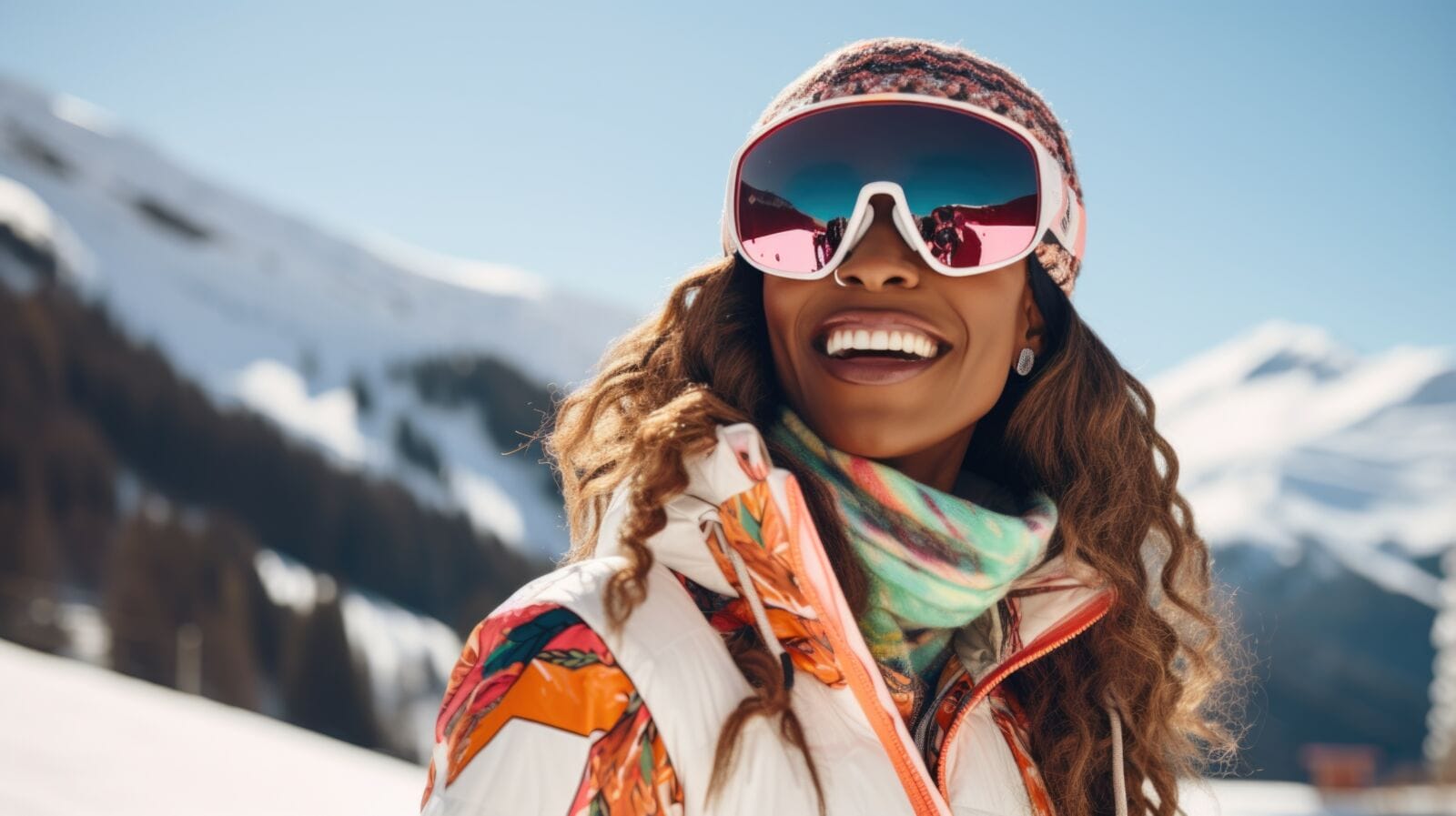Skiing continues to advance, and so does the gear we wear while we hit the slopes. Today’s high-performance ski suit for women is more than just that – it’s a mix of cutting-edge materials, safety features, and tech integration that’s working together in new ways to deliver comfort, protection, and performance we never thought possible. Whether you’re an experienced skier or just starting out, having the right gear – like a well-fitting women’s ski suit – can make or break your experience on the mountain.
The correlation of comfort, safety, and style has never been more evident than now. Ski wear now allows skiers to remain warm, dry and safe, while still having the potential for some style choices to express who you are or what you are comfortable with. The evolution of ski wear isn’t just about outerwear – it’s also about advancing the often-overlooked underlayers and undergarments, helmets, and eyewear. This shift is changing the conversation among skiers about getting ready for their alpine adventures.
Smart Fabrics and Thermal Regulation
Skiers have come a long way from the heavy layers of the past. Today, modern smart fabrics feature sensors and micro-heaters that automatically adjust to your activity level and surroundings. For example, a jacket with micro-products can create heating elements, allowing you to warm up specific areas and stay at an optimal temperature. This technology adapts to various conditions, from chilly morning runs to demanding downhill descents. With this level of comfort, skiers can focus on performance. Smart fabrics offer warmth without creases and don’t require constant adjustments, allowing you to “set it and forget it.” According to Outside Magazine, advancements in textile engineering are revolutionizing ski and sports clothing, introducing new intelligent systems designed to be active and not just passive insulators.
LOCAL NEWS: Here’s where new Phoenix residents are moving from
INDUSTRY INSIGHTS: Want more news like this? Get our free newsletter here
Cut-Resistant Undergarments
On the ski hill, a cut could be made at any moment could occur when a skier or boarder falls, and the edge of their ski or board comes into contact with the flesh of an athlete who has already been injured after collision with something or someone. The possibility of being cut while skiing with the high-speed demands and/or with an elevated level of risk tolerance would lead the skier to a high probability of being cut. The new cut-resistant undergarments, in particular the baselayers, have fundamentally changed the approach to safety while skiing. These purpose-built baselayers, manufactured with advanced fibres, and weaving, have cut and abrasion resistance, while not with the bulk, or intrusive feelings of other baselayer fabrics either. Cut-resistant technology has also become commonplace in ski racing with governing body regulations (including FIS to provide protection due to the likelihood of cuts occurring, where brands like Vix Protection) are allowing the athlete to have undergarments that have the capability to protect and compress, without taking away the ability to move freely, nearly eliminating these accidental slash hazards and providing protection to all athletes. According to the Associated Press, incidents involving Breezy Johnson and Aleksander Aamodt Kilde have demonstrated the need for athletes to wear cut-resistant base layers.
Innovation in Helmets
Head injuries are the most consequential injury in winter sports. Helmets now with modern helmet systems which now also include technology, including the Multi-directional Impact Protection System (MIPS) allows contemporary helmets to be designed with rotational coverage encompassing of all 360s of directional impact forces. Rotational impacts, the cause of brain injury during angled falls. These helmets have an internal slip-plane that allows the helmet to rotate in conjunction with, in effect dispersing the rotational forces before imparted on to the head. Another innovation, material including Koroyd, lightweight tubular structures that absorb impact energy significantly better than traditional foam. In addition, though these helmets provide an overall better comfort and protection, they are light enough to wear all day. The New Your Times has indicated that the increase in the use of these helmets has a statistically significant reduction in traumatic head injuries related to skiing and snowboarding.
Green & Sustainable Materials
Ski and winter wear brands are becoming much more aware of their environmental stewardship role and sustainable material options. The brands have pushed there will be there own shift in the last five years to incorporate high-quality performance fabrics including polyester made from recycled plastics, organic cotton and bamboo blends to minimize its environmental impact and carbon footprint. These sustainable performance fabrics do not give up any functionality as they can offer extraordinary moisture management, durability, breathability without any reliance on new synthetic materials that are resource-heavy.
In addition to just the sustainability of the fabrics, much of brands moving to sustainability have also shifted to emphasize ethical making processes, fair labor and lower packing waste addressing a net positive related to their sustainability efforts of eco-friendly skiers who value and want to protect the natural spaces where they visit and try their best to live a meaningful outdoor life outside.
Customization and Fit-To-Function
Skiers can now take pride in the fact that there is a quality product that functions at a high level and now comes in a custom or tailored fit. The new operation of ski apparel companies highlighted the custom or tailored style, high waisted pants and belted ski jackets, that fit closely to the body and keep that slim profile without sacrificing movement to the skier. Features of the garments must also exhibit total stretch and all-over comfort, hence no restriction, while adding wind and water resistance. Platforms for custom fitting and modular layering provide even more opportunities for personalization for a fit that is just right for each athlete and, as such, move attention to developed designs for style and comfort in ever-changing mountain conditions.
Integrated Wearable Tech
Wearable technology is changing the mountains utilizing the momentum of a quiet revolution. Many helmets are now not only helmets either and are providing built-in communication systems, so you can coordinate your mountain exploration with friends and/or instructors! The newest helmets are now integrating augmented reality (AR) goggle systems displaying the display mounted inside or out to your line of sight, so you now have speed, altitude, and navigation where you can see them!
This connectivity adds safety and enjoyment to the athlete’s experience of navigating the mountain lack a sense that the loss of direction was despair and allows for some real-time tracking of various metrics that are becoming standard in use, so we are producing an increasingly connected interactive experience every time we travel downhill.
Getting Vital Info
Smart apparel is also providing clarity and visibility to skiers in mountainous terrain and to themselves. Visibility has always been one of the biggest risks we deal with when skiing in alpine conditions. Smart glasses are increasingly better at managing fog, glare, and low light situations with specialized complex coatings, anti-fog technology, and photochromic lenses to manage transition of light. A plethora of smart apparel variations is providing HUD features to give real time data regarding trail maps, changes in weather conditions, and performance data right in front of the skiers vision.
The smartest models show layering with augmented reality navigation points layered over actual working terrain, which is sophisticated feedback for continuing routes and finding friends. This substantial leap in eyewear increases situational awareness which allows skiers to safely follow their potential boundaries on bad weather or non-groomed years.
Conclusion
Currently advanced snow sports clothing and equipment continue to demonstrate the remarkable possibilities of the intersection of innovative technology, design, and sustainability practices. Features to enhance comfort, safety, experiences, and opportunity will be based in; smart thermal layer fabrics, of varying helmets impact zones, and percentages of a sustainable/recycled materials feature. As these behaviours continue to define snow sports, ski and snowboarding gear that allows users to continue their sport respectably as to offer; in the spirit of performance, generating memories, and sharing moments that refocuses and embodies your stated environmental principles regardless of progressive commercial seasons over seasons.




